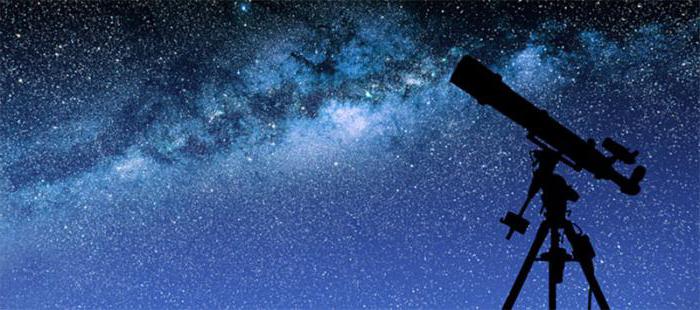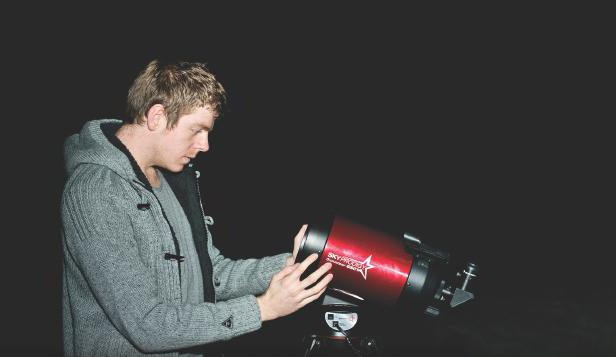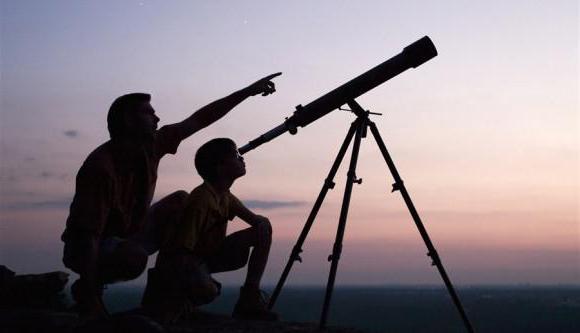Novice astronomers admire the starry sky with the naked eye. To do this, they only need a flashlight, preferably red (so as not to blind their eyes). Important for such lovers is the overview map of the starry sky. It can be found in the astronomical calendar.

Knowing the names of the constellations and stars, as well as their location, will be useful to such lovers in the future, when they acquire the first telescope for viewing celestial bodies. This amazing device, especially if it has additional accessories and options, will allow you to become a reliable and faithful companion in an exciting journey through the night sky.
Purpose of purchase
A telescope is a device whose use allows a person to observe celestial objects far removed from the Earth. But not everyone is turning their eyes to the sky. Some people use a telescope to observe Earth objects.
More recently, the prices of telescopes were simply sky-high. And only professional astronomers and ufologists could afford to purchase such a device. Today, devices designed to observe celestial bodies are much more affordable. Quite ordinary people can buy them. Some parents, for example, acquire a telescope for their child. They want to help their child learn the secrets of the universe and explore the world around them. Astronomy is gaining popularity among adults. More and more of them dream of seeing nebulae and planets closer than with the naked eye. And for this, without a doubt, you will need a telescope.
If you go to specialized stores, you can understand that the choice of such devices is quite extensive. And for those who first decided on such a serious purchase, it can be very difficult to navigate in all the variety of models.
How to choose a telescope? What parameters should I pay close attention to? Let's try to understand the basic issues related to the purchase of the device and its characteristics.
Acquisition purpose
How to choose a telescope? Before buying, it is important to understand what you expect from the device. To do this, the following questions have to be answered:
- What are the conditions under which the appliance will be operated?
- What celestial bodies will be monitored?
- Is a telescope needed for astrophotography?
- What should be the maximum cost of the device?
Answer all these questions should be considered and balanced. After all, the choice of a specific model will depend on this. If the goal is set incorrectly, the user can subsequently remain disappointed with his purchase.
Types of observation
How to choose a telescope for a beginner astronomer? Beginners in this matter are trying to find for themselves a kind of universal model that would be suitable for any kind of observation. These can be close objects included in the solar system (comets and asteroids, planets with satellites, the moon and the sun itself), as well as distant cosmic bodies and formations (nebulae, stars and galaxies).

Sometimes the telescope is also used to approximate what is on the surface of the Earth. However, a device with which it would be possible to monitor both distant and close bodies simply does not exist. For this device must have different characteristics.
Place to observe
How to choose a telescope? To do this, you need to decide on the place where the device will stand when studying the starry sky.If this is the balcony of a city apartment, then the astronomer simply does not have a chance to see distant cosmic bodies. This will be prevented by night street lighting. In this case, the telescope for close observation will be the most rational purchase.
And if the point for exploring the night sky will be in the country or in the village? In this case, you can opt for a device whose characteristics will reveal the secrets of distant galaxies. Indeed, the sky away from the city is very dark, which creates all the conditions for the maximum approximation of such objects.
Those who plan to transport the telescope to observe planets from different points should consider not only the power characteristics, but also how simple the device is when folding, installing and setting up, and whether it fits in a machine.
Operating principle
How do telescopes work? The instrument, designed to monitor the night sky, performs two very simple functions. The first of these is the collection of light from distant space objects. The second function is to enlarge the image of celestial bodies.
Telescopes come in many different designs, but the principle of operation is the same. A mirror or lens (or two of these elements together) collect light on its surface. This happens in such a way that the resulting image can be viewed through the eyepiece. Which of the two functions of the telescope is considered the most important? Experts say that the first, that is, the collection of light. At the same time, contrary to the opinion of many beginning astronomers, a large increase is not as important as it seems at first glance. And this can be explained by simple logical reasoning. After all, someone who wants to consider a small object in a dark room will reach for the switch, and not for a magnifying glass.
Perhaps this will surprise someone, but many celestial objects do not particularly need the second function of the telescope. An example of this is the Andromeda Nebula. It extends at a distance greater than the diameter of the full moon, and in order to see this object, a strong increase is not necessary. All that is needed is the light collected on the lens.

The increase for the astronomer is important if he is going to observe objects that are located in close proximity to planet Earth. But you also will definitely want to look at the objects of deep space. All this is worth considering when buying the first telescope. Do not chase a model with a large increase. Of course, I want the celestial bodies to look larger, but in this case the vibrations created by the instrument’s pipe, as well as the distortions caused by atmospheric turbulence processes will become more noticeable.
Main components
What is a telescope made of? Its main details are as follows:
- Trumpet. This is the main part of the device in which the lens is located.
- Seeker. This element is a greatly reduced telescope, allowing a preliminary search for a celestial object.
- Eyepiece. This is a part of the telescope that can be changed. The long focus of the eyepiece indicates a smaller increase in objects, but at the same time gives a larger viewing angle.
- Mounting (fastening). Most often it is a tripod with two rotary axes.
- Light filters. They are designed for a wide variety of purposes, in particular to extinguish too bright a beam of light.
- Inverting systems and diagonal mirrors. With their help, the image is turned over, which is initially issued upside down.
Types of telescopes
Instruments designed to monitor the night sky are very different. Existing types of telescopes include in their list such:
- optical (telescopes designed to observe satellites, coronographs, astrophysical and general purpose);
- radio telescopes;
- neutrino;
- infrared;
- x-ray.
In turn, there are different types of optical telescopes. They are divided into three types:
- refractors;
- reflectors;
- mirror lens.
The principle of operation of refractor telescopes is to collect light with a two-lens lens and focus the received beam at one point. The same thing happens in reflectors. Only instead of a lens does their design provide for a concave mirror.
The combination of these two elements is used in cadionotric telescopes. These are mirror-type lens models that allow the use of shorter portable tubes.
Even with a budget that does not reach five hundred US dollars, many models of all three types can be purchased on the market for these products.
Which telescope is better to choose? Everything will depend on the objectives of the acquisition. So, refractors will perfectly prove themselves in those cases when the observation will be carried out for the brightest objects, such as the Moon, as well as the planets of the solar system.
Those who decide to observe the galaxies and dim nebulae are better suited for reflectors. They will collect more light and do fine with those foggy objects that are away from our solar system.
A lover on a trip with a telescope will need a universal compact device that can be easily taken with you on fishing and on vacation, as well as installed on any site outside the city. The best choice for this is a mirror-type lens device.
For those who seek to find the answer to the question of how to choose a telescope, it is important first of all to understand its main technical characteristics.
Aperture
How to choose a good telescope? To do this, you need to carefully consider its main characteristic, which is the diameter of the lens or the main mirror. This parameter is called the telescope aperture.
Depending on the diameter of the lens, which is measured in millimeters, there are all the main characteristics of the device, namely:
- optical, expressed in resolving power and maximum magnification;
- mechanical, that is, the size and weight of the device.

Larger diameters allow the telescope to collect the maximum amount of light. Due to this, the brightness of the image of the object increases, as well as its contrast and clarity, which will allow us to consider dim celestial bodies.
How to choose a telescope by its most important characteristic - an aperture? Those who plan to observe celestial bodies in the solar system and live in the city should choose a lens with a diameter ranging from 120 to 150 mm. Novice astronomers interested in nebulae and galaxies, as well as other distant objects, should pick up a telescope with an aperture of 200 mm or more. When observing the starry sky from points located in sparsely populated places, there are no restrictions on the size of the lens. Here, the choice of a particular model will depend only on the financial capabilities of the user. The largest telescope offered in specialized stores is a device with an aperture of 406 mm.
Resolving power
This characteristic represents the ability of a telescope to separate objects that are located in close proximity to each other. It can be either double stars or small entities located on the disks of planets. The resolution value is calculated by the formula 140 / D.
In contrast to the Moon and any terrestrial objects, stars are a complex subject to observe. This is because they are point sources of light. To form a clear image, the telescope must have good resolution and diffraction images. Indeed, despite the fact that a point beam of light is directed from the Universe to the device, the astronomer sees a tiny disk surrounded by weak light rings in the eyepiece. A similar image of a star is called diffraction.A high-quality optical system is able to clearly separate two luminous points with disks located in close proximity to each other. This characteristic is the resolving power. By diffraction-limited telescopes, we mean those that share stellar points only with the theoretical limit of possibilities that the aperture has.
Increase
The maximum magnification of a telescope is recognized by dividing the focal length of the lens by the same eyepiece parameter. The magnitude of the marginal increase is expressed in krata. When changing the eyepiece, a different increase can be obtained, which is very convenient when changing the objects of observation.

The magnification in the study of bright close objects (for example, the moon) should be large. This will increase the clarity of detail. A strong increase in the study of foggy and distant objects will be simply useless. In such cases, its value is sufficient in the range from 50 to 100 times. If the beginning astronomer plans to observe the most distant galaxies, then the maximum magnification of the device, as well as its aperture, should be as large as possible.
Focus
What else is recommended to pay attention to when choosing a telescope? One of the important parameters of such a device is its focal length. It is calculated in millimeters. The focal length is the distance between the main lens and the main focus of the device. This characteristic affects not only the magnification of the image, but also its quality. The greater the magnitude of the focal length, the more clearly you can see the celestial bodies under consideration in the lens.
How to choose a telescope for this parameter? Devices with short focal lengths do not give a large increase. It is quite simple to understand if you take two telescopes having the same aperture, but different distances between the lens and focus. In addition, short-focus eyepieces have such a significant drawback as a small pupil extension. This is very inconvenient for an astronomer. After all, he has to bring his face too close to the eye lens on the eyepiece.
Diagonal mirrors
Various telescope models have many accessories. They are either included with the device, or purchased separately. One of these accessories are diagonal mirrors. When an object is located above the astronomer’s head, they help them to take a comfortable position. Diagonal mirrors deflect light, directing it at right angles to the main tube of the telescope. This accessory is included in the standard set of refractors and mirror lens devices.
Viewfinders
Most telescope models have a small field of view. That is why finding an object and centering its image becomes a daunting task. Viewfinders allow you to solve the problem. They are small wide-angle telescopes that are equipped with an internal sight, which facilitates the search for objects.
With the viewfinder and the main instrument parallel in relation to each other, the object is first determined using the first of them, and only then it appears in the field of view of the astronomer.
Prisms for image straightening
The image of the object under consideration falls into the telescope upside down. Moreover, its right and left sides also turn out to have changed their original position. To obtain the correct position of the celestial bodies on their image in the telescope, rectifying prisms are provided. They correct the orientation of objects and allow you to observe them at an angle of forty-five degrees, which is very convenient.
Mount
Using this mechanical device, the telescope is pointing to the desired point in the night sky. This allows you to monitor a space object.
The type of mounting of telescopes may be different. These devices are divided into two types:
- azimuthal;
- equatorial.
And even within the same type of mount, they can have differences in design features. This, for example, may be the presence or absence of drives, screws, subtle movements, computer homing systems, etc.
Any azimuthal mount works due to the presence of two rotation axes - vertical and horizontal. Such systems are excellently suited for panoramic observations of celestial or terrestrial objects. Azimuth mounts are easy to operate and do not require additional settings. As a rule, small catadioptrics or refractors are fixed on them.
The most universal are equatorial mounts. They are often used when using professional telescopes. Such mounts have a mechanism of subtle movements and electric drives that allow you to control the system using the remote control.
Little astronomers
How to choose a telescope for a child? This device, without a doubt, can be a useful and very unusual gift for a little astronomer. The child will be able to cope with the control of the simplest telescope from the age of 8-10. For this age, it is enough to purchase a simple refractor.

It is reliable, inexpensive, and fairly easy to operate. To observe the Moon and nearby cosmic bodies, a device with an aperture of 70 mm will be enough. It is best if the mount is selected azimuthally. It is much simpler and will not become an obstacle to observing celestial and earthly objects.
Almost all manufacturers of telescopes have special models for children, which are distinguished by special structural strength.
Astrophotography lovers
What are the main characteristics of telescopes in this case? The aperture of such devices should be as important as possible. This will allow the lens to collect the maximum amount of light, and the person to set the shortest possible exposure. As a result, the pictures are of the highest quality.
How to choose a telescope for astrophotography? It is best to look at the mirror-lens type of devices. They have a larger aperture and focus length. These characteristics provide a clearer image. Mounting will need equatorial, equipped with an automatic drive. Such a device will allow not to lose sight of an object moving across the sky.
Telescope Rating
The mesmerizing process of exploring the starry sky today is not as complex and expensive as it was just recently. Currently, manufacturers offer a large number of home relatively affordable telescopes. They allow most people to enjoy the beauty of cosmic landscapes. Consider the rating of such a technique, which includes the most popular models.

- Celestron NexStar 130 SLT. This is a refractory telescope with a large aperture. It has high-quality optics and has simple settings. The cost of such a telescope starts at 17,999 rubles.
- Meade StarNavigator 102. This telescope is a refractory type. According to user reviews, it has low maintenance and excellent quality. The telescope can be used in daytime conditions. The cost of the device starts from 17,490 rubles.
- Celestron NexStar 4 SE. This model is a mirror-lens one and is distinguished by an innovative design, strong mount, as well as a compact size. The model has a database that contains 40 thousand celestial bodies. The cost of such a telescope starts at 26,490 rubles.
- Celestron Onmi XLT 127. This is the latest generation model. It includes not only a stable platform, but also high-quality optics. The telescope has an aspheric function, as well as the ability to manually refine optical elements. This allows astronomers to get a fairly clear picture, not distorted by spherical aberration. In addition, the telescope provides enlightenment StarBright XLT.It helps to increase the light transmittance of the data received by the device. Remarkable mechanical qualities, as well as high-quality optics make these telescopes an ideal option for astronomy enthusiasts seeking to try themselves in astrophotography.








